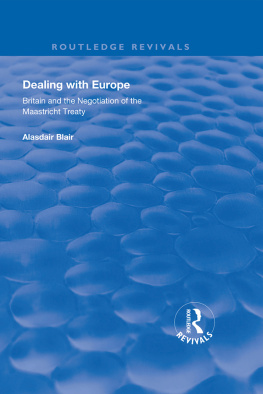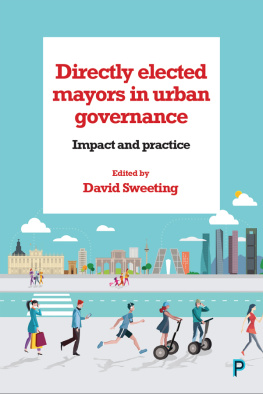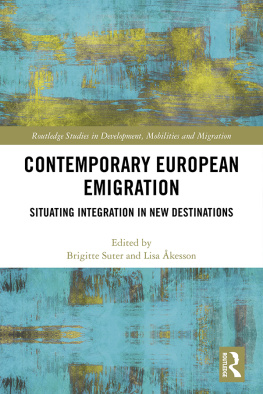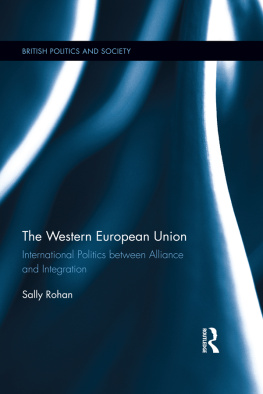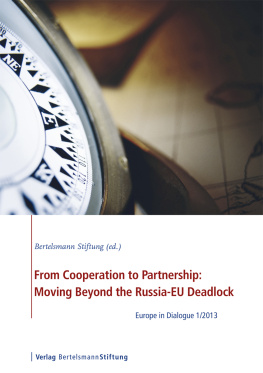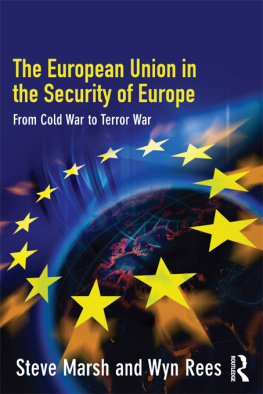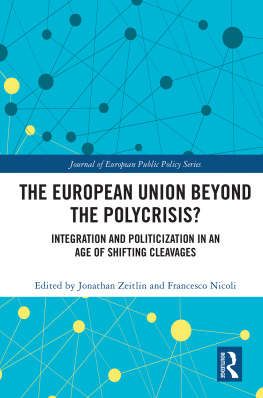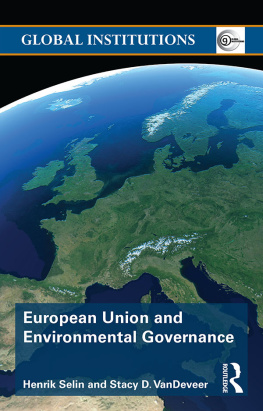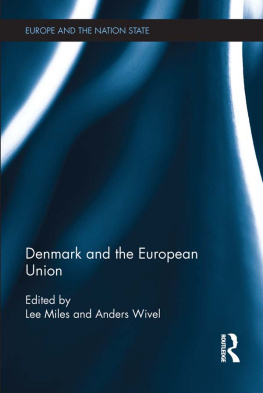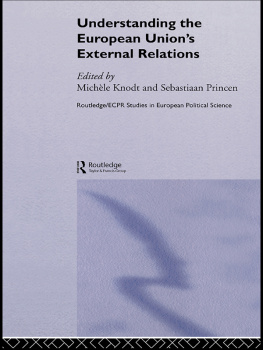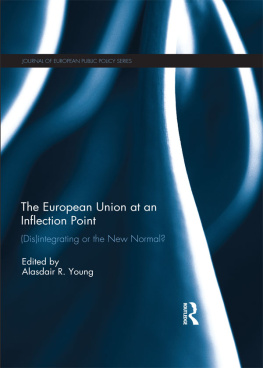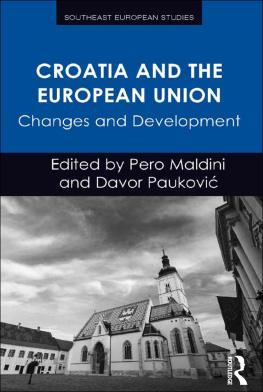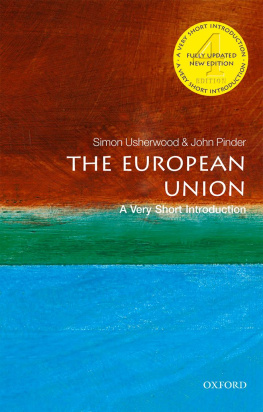The European Union
A Beginners Guide
A well-focused introduction to both the history and institutional set-up of the EU. A near-perfect equilibrium between fundamental perspectives and factual detail.
Jrg Monar Professor of Contemporary European Studies, University of Sussex, and Marie Curie Chair of Excellence, Universit Robert Schuman de Strasbourg
Excellent and very informed.
Finn Laursen Professor and Canada Research Chair in European Union Studies, Dalhousie University
ONEWORLD BEGINNERS GUIDES combine an original, inventive, and engaging approach with expert analysis on subjects ranging from art and history to religion and politics, and everything in between. Innovative and affordable, books in the series are perfect for anyone curious about the way the world works and the big ideas of our time.
aesthetics
africa
anarchism
aquinas
art
artificial intelligence
the bahai faith
the beat generation
biodiversity
bioterror & biowarfare
the brain
british politics
the buddha
cancer
censorship
christianity
civil liberties
classical music
climate change
cloning
cold war
conservation
crimes against humanity
criminal psychology
critical thinking
daoism
democracy
descartes
dyslexia
energy
engineering
the enlightenment
epistemology
evolution
evolutionary psychology
existentialism
fair trade
feminism
forensic science
french literature
french revolution
genetics
global terrorism
hinduism
history of science
humanism
huxley
islamic philosophy
journalism
judaism
lacan
life in the universe
literary theory
machiavelli
mafia & organized crime
magic
marx
medieval philosophy
middle east
NATO
nietzsche
the northern ireland conflict
oil
opera
the palestineisraeli conflict
paul
philosophy of mind
philosophy of religion
philosophy of science
planet earth
postmodernism
psychology
quantum physics
the quran
racism
renaissance art
shakespeare
the small arms trade
the torah
sufism
volcanoes


A Oneworld Paperback Original
Published by Oneworld Publications 2012
This ebook edition published in 2012
Copyright Alasdair Blair 2011
The moral right of Alasdair Blair to be identified as the Author of this work has been asserted by him in accordance with the Copyright, Designs and Patents Act 1988
All rights reserved
Copyright under Berne Convention
A CIP record for this title is available from the British Library
ISBN 978-1-85168-898-2
eBook ISBN 978-1-78074-091-1
Typeset by Cenveo Publisher Services, Bangalore, India
Cover design by vaguelymemorable.com
Oneworld Publications
185 Banbury Road
Oxford OX2 7AR
UK
Learn more about Oneworld. Join our mailing list to find out about our latest titles and special offers at:
www.oneworld-publications.com
Preface
For more years than I can remember I have been fascinated with the study of Politics and International Relations, particularly the relationship between Britain and the European Union (EU). During that time I have been fortunate to discuss my thoughts with staff and undergraduate and postgraduate students at the universities in which I have been employed: the University of Leicester, the Open University, London Metropolitan University, Nottingham Trent University, Loughborough University, Coventry University, and finally De Montfort University. My first words of gratitude are to the colleagues and students who took time to ask questions and raise comments that helped refine my thoughts.
A book of this nature inevitably draws on the labour of many scholars working in the area of European integration. I have been extremely fortunate to have developed a career at a time of great expansion in the literature devoted to the study of the EU. The task of this book is to provide a broad survey of the field and to introduce students and the general reader to the subject matter in an accessible way. This is no easy assignment for a subject such as the EU, which is dominated by turgid language on sovereignty, policy making and inter-institutional bargaining. This book has concentrated on reviewing the key moments in the history of European integration, examining the shifting balances of power between the four main EU institutions, and analysing core EU policies. Many more words could have been invested in looking at other institutions, policies, theories and historical coverage.
The EU is a subject that specialises in producing abbreviations, which can create a degree of confusion. The Treaties of Rome created two communities: a European Economic Community (EEC) and a European Atomic Energy Community (Euratom). In 1967 they merged with the European Coal and Steel Community (ECSC) to form a single institutional structure. From the 1970s onwards it was commonplace to refer to all three institutions as the European Community (EC). In the 1993 Treaty of Maastricht the EC became the EU and as such it is common for people to refer to the EU in recent years, but for the period prior to the 1990s to use a mixture of EC and EEC. This is a convention that I have stuck to in this book, although I have also used the more general practice of referring to the EEC/EC/EU as simply Europe. This is because Europe is the term that is often used in debates on the subject.
In writing this book I would like to thank Mike Harpley for suggesting that I should undertake this task and for providing valuable comments on drafts. A number of academic colleagues require to be singled out for their kind generosity and willingness to offer guidance, support and encouragement to my career over the years. Particular thanks go to John Young, Philip Lynch, Wyn Rees, Jrg Monar, Hans Mackenstein, Michael Newman, John Leopold, Michael Smith, David Allen, Brian Hocking, Anthony Forster, Steven Curtis, Philippa Sherrington, Christopher Goldsmith, Alistair Jones, Alison Statham and Finn Laursen. Thanks are also due to Katherine, William and my family who remind me of the importance of family and life beyond work. It is to them that I dedicate this book.
Alasdair Blair
Thornton
Map
The 27 member states and acceding/applicant countries in 2012

1
What is the European Union?
Why would any country want to be subject to rules and decisions that are taken in an arena they cannot control? Today there are a number of examples throughout the world where countries have joined together to form a common organisation. This can be the result of regional concerns, as in the case of the African Union (AU) or the Association of South-East Asian Nations (ASEAN). In other instances, there might be common concerns that cut across regional boundaries. The most obvious example is the United Nations (UN). With a membership of 193 countries, it represents more or less every country in the world.
The European Union (EU) is different from these organisations. From Beijing to Berlin and Lima to London, the policies and decisions that are taken by the EU are of relevance to governments, businesses and individuals. If you live in any of the twenty-seven EU member states the reality is that approximately half of all the new laws that are implemented in your country with an economic focus will have originated from decisions taken by the EU. Non-EU countries do not escape. Childrens toy manufacturers in China have to adhere to strict EU controls on the materials used for production. Computer software manufacturers in the United States of America (US) need to be aware of EU rules on fair competition.


